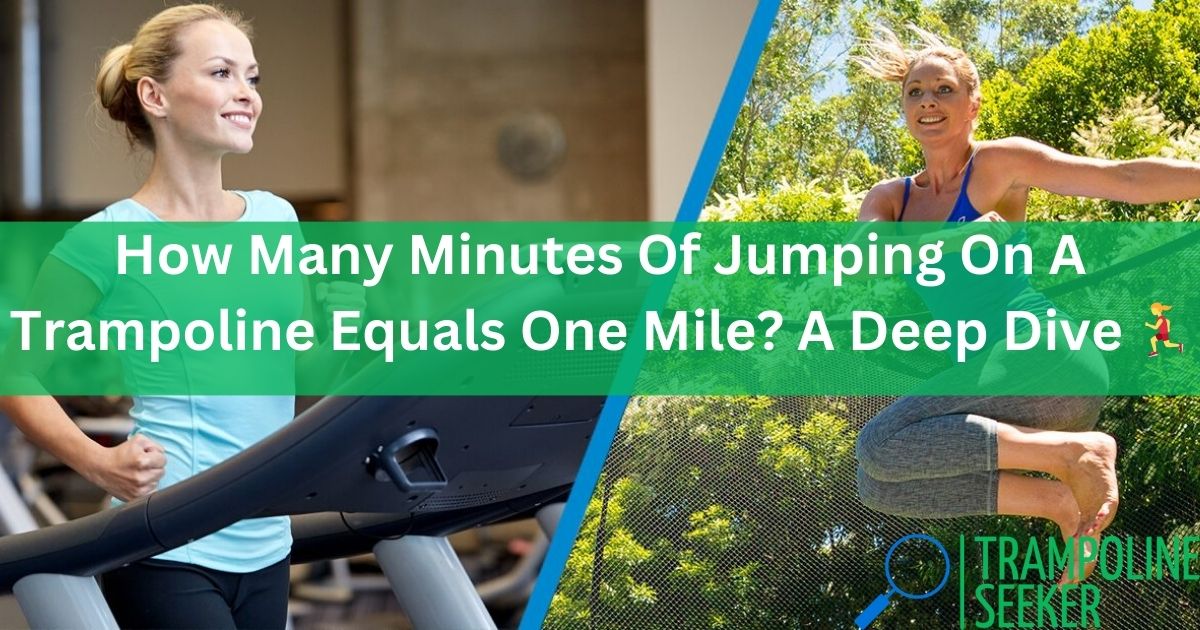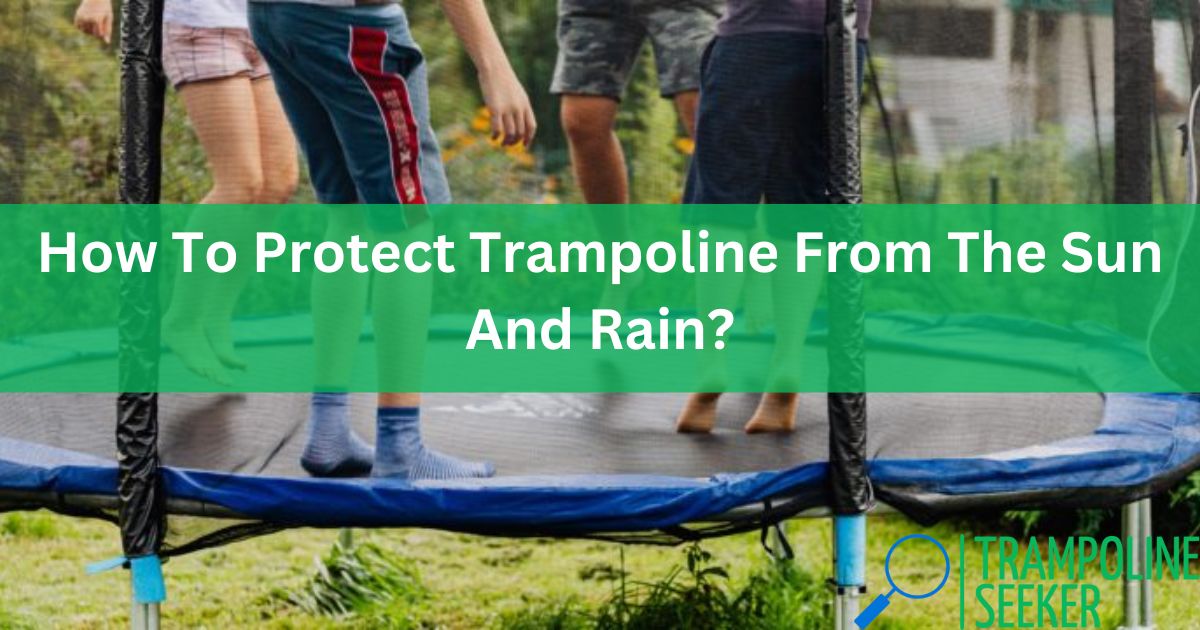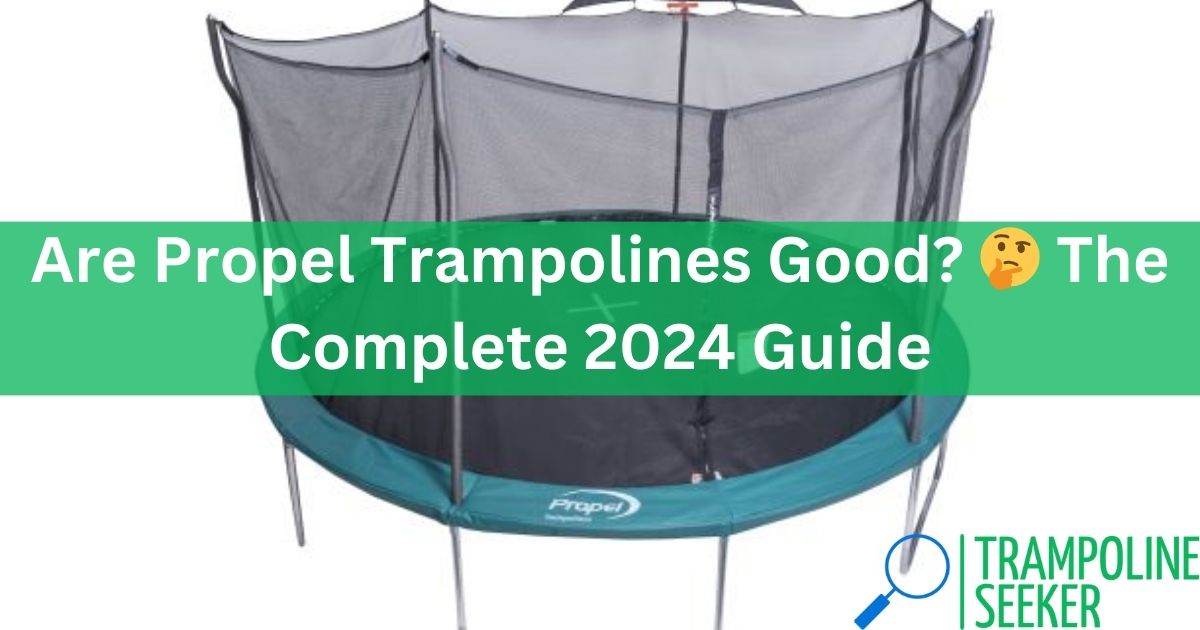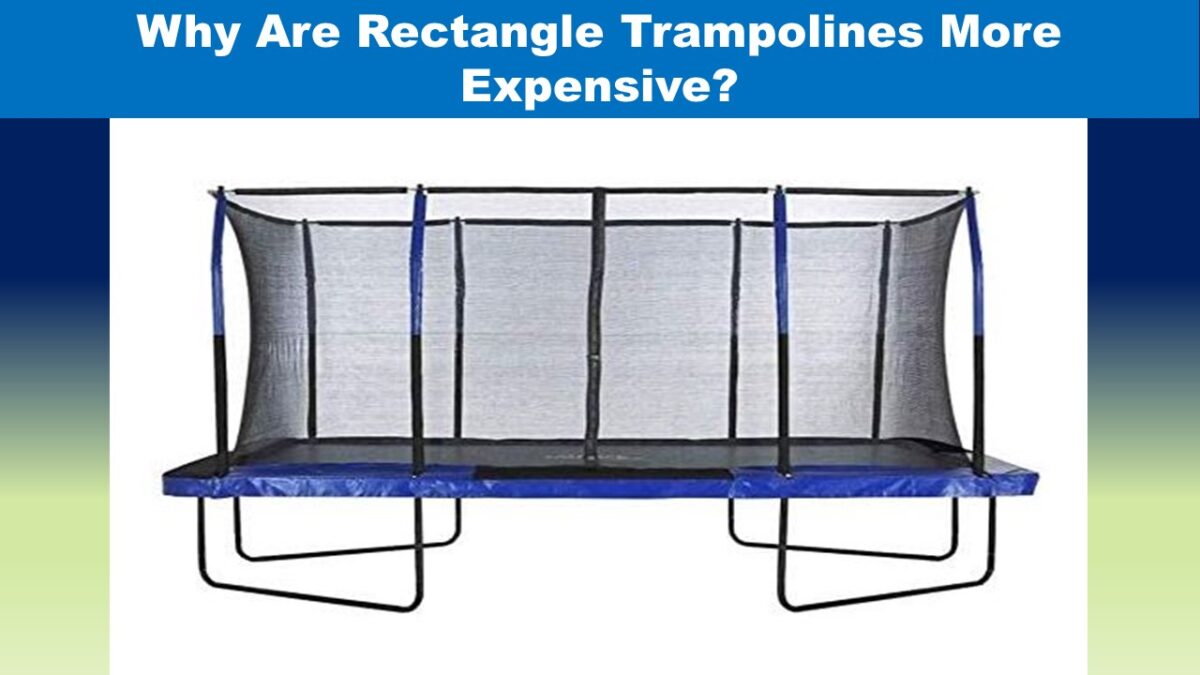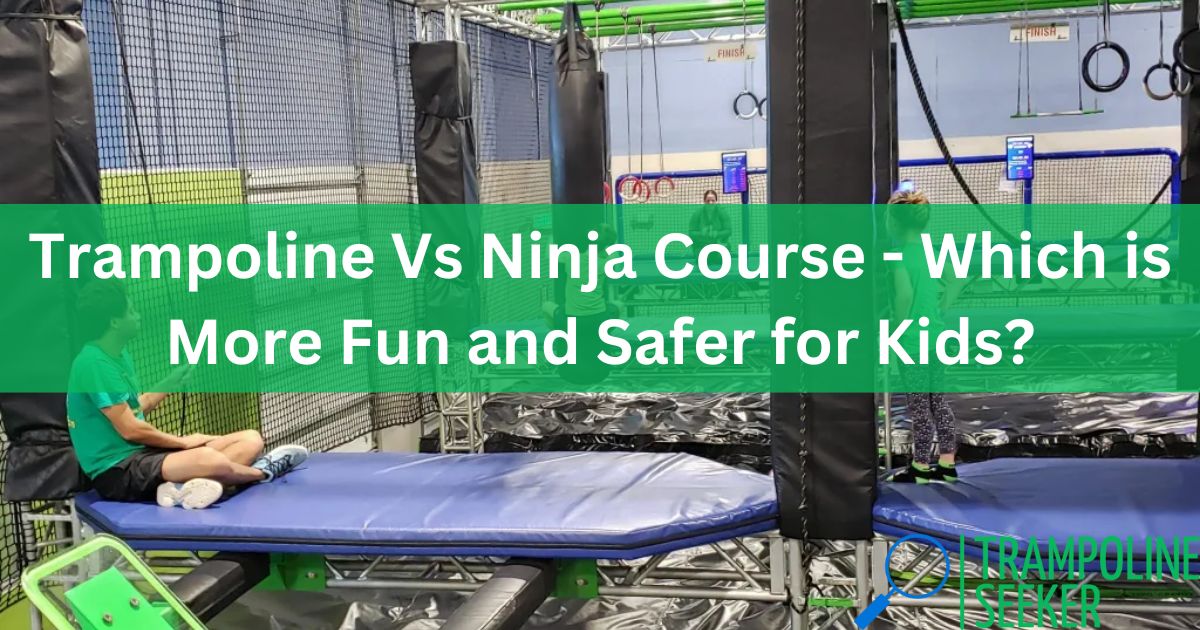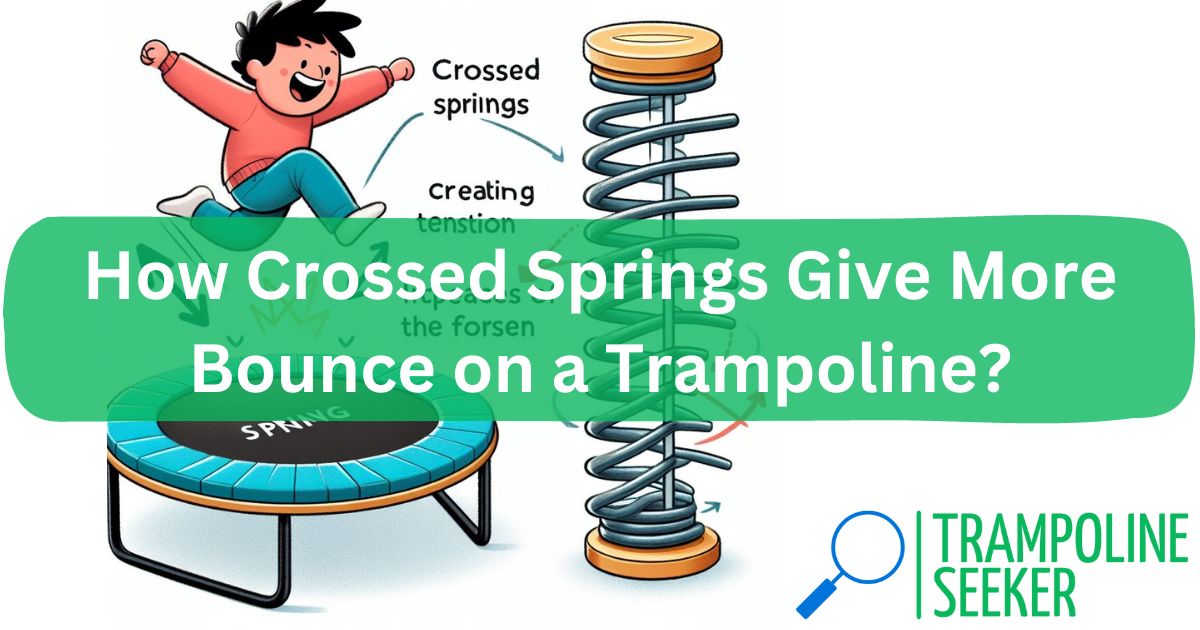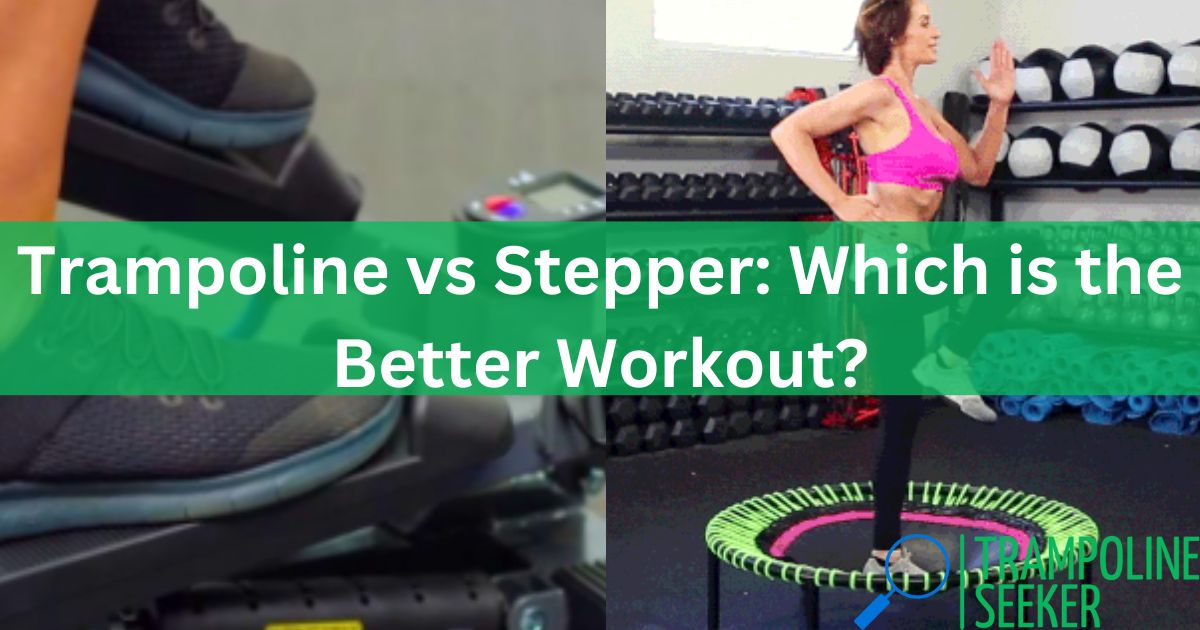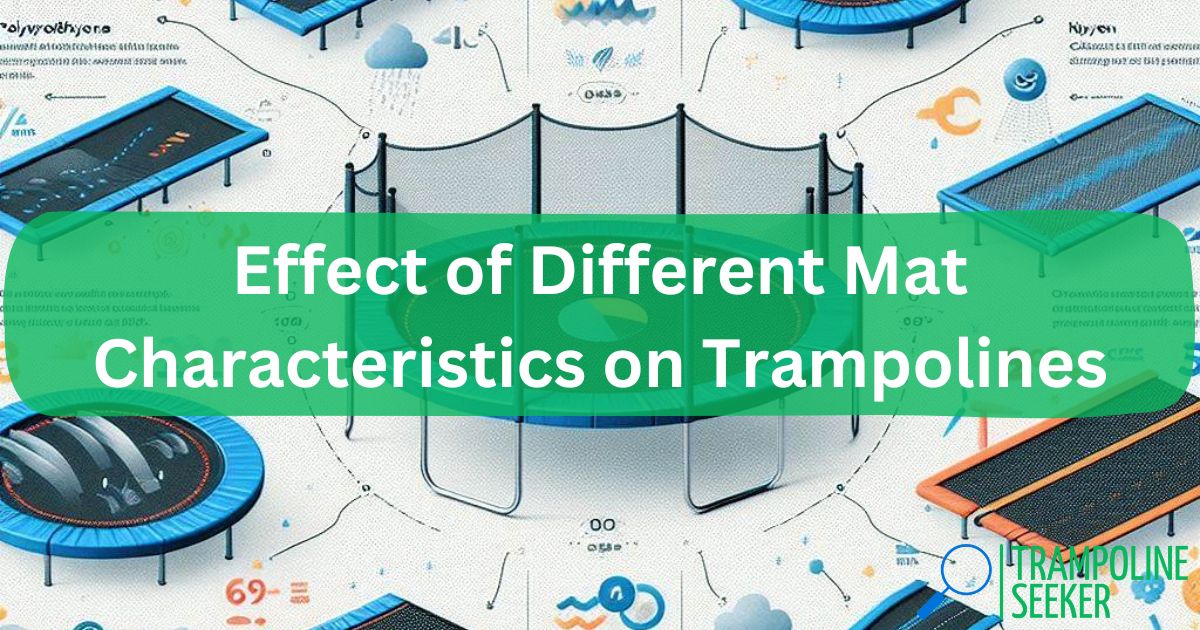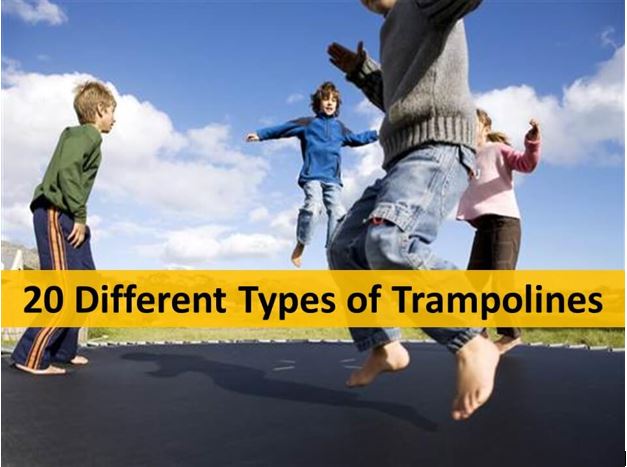Trampolines come in a variety of sizes but three of the most common options for residential backyards are 12 ft, 14 ft and 15 ft models. As a parent researching which size would work best for my family, I dug into the key differences between these three trampoline diameters to determine the right fit.
In this blog, I’ll cover everything you need to consider when deciding between a 12 ft vs 14 ft vs 15 ft trampoline. I’ll compare the space requirements, weight limits, number of jumpers, bounce experience, safety considerations, and cost implications across these popular trampoline sizes. My goal is to arm you with the information you need to confidently pick the ideal trampoline size for your backyard and family.
In short you need to carefully weigh backyard space, number of kids, and budget when deciding between popular 12 ft, 14 ft and 15 ft trampolines. Larger sizes accommodate more jumpers with premium bounce, but even 12 ft options allow 1-2 kids to play.
Key Factors To Compare 12 Ft, 14 Ft and 15 Ft Trampolines

When comparing 12 ft vs 14 ft vs 15 ft trampolines, there are five key factors I analyzed:
- Backyard/Space Requirements
- Weight Limits
- Number of Simultaneous Jumpers
- Bouncing Experience
- Cost
Let’s explore how these trampoline sizes stack up across each consideration.
Backyard Space Requirements
The first major factor in deciding between a 12 ft vs 14 ft vs 15 ft trampoline is measuring your backyard space to ensure whichever size you choose properly fits.
Here is a breakdown of the space needed for each trampoline diameter:
- 12 ft Trampoline: Approximately 144 sq ft (12×12 ft space)
- 14 ft Trampoline: Approximately 168 sq ft (14×14 ft space)
- 15 ft Trampoline: Approximately 196 sq ft (15×15 ft space)
You’ll also want to account for 3-5 feet of clearance around the trampoline free from trees, fences or other structures. This gives jumpers adequate room to stay safe.
So when deciding based on backyard space, grab a tape measure and check you have the proper area to accommodate whichever size intrigues you. If your yard is on the smaller side, a 12 ft trampoline may be the best fit, while larger yards can accommodate 14 ft or 15 ft models no problem.
Weight Limits
The second key differentiator between these three trampoline sizes is the total weight each is designed to handle.
On average, here is the weight capacity for each diameter trampoline:
- 12 ft Trampoline: 250-375 lbs weight limit
- 14 ft Trampoline: 300-425 lbs weight limit
- 15 ft Trampoline: 375-500 lbs weight limit
The higher weight allowances on the 14 ft and 15 ft trampolines make them better suited for multiple jumpers, bigger kids, teenagers and adult use. More springs and a heavier duty frame/mat on these larger sizes account for the increased capacities.
So consider your family members using the trampoline and whether you expect adults to use it occasionally too. This will help match you with the right total weight limit.
Number of Simultaneous Jumpers
Tying into weight limits, the amount of room on each trampoline size also determines the number of people who can jump simultaneously.
Here’s a rough estimate:
- 12 ft Trampoline: Good for 1 child or 2 smaller kids at once
- 14 ft Trampoline: Allows 2 bigger kids or 3 smaller kids at once
- 15 ft Trampoline: Accommodates 2 adults or 3-4 kids at once
More jumping surface area on the 14 ft and 15 ft models allows for more simultaneous jumpers. However, even the 12 ft trampoline has room for 1-2 kids to bounce together.
So think about your family size and how many children will likely use the trampoline at once to choose the right capacity.
Bouncing Experience
One benefit of going bigger with a 14 ft or 15 ft trampoline is it generally provides a better bouncing experience than a 12 ft option. More springs and a tighter trampoline mat mean higher, more controlled bounces.
For example, a 12 ft trampoline may have 72-84 springs while a 15 ft bumps that up to 96-108 springs. And diameters beyond 15 ft creep into premium “gym quality” bounce territory.
So if maximizing bounce for recreational family enjoyment (or to practice flips!) is important, lean towards the largest trampoline your yard allows. But a 12 ft trampoline still supplies plenty of fun, quality bounce too.
Cost Implications
The final consideration when weighing 12 ft vs 14 ft vs 15 ft trampolines is the cost. Generally, price increases with size, as more materials are required for bigger models.
Here is an average price range for each diameter:
- 12 ft Trampoline: $300 – $500
- 14 ft Trampoline: $400 – $600
- 15 ft Trampoline: $500 – $800
Now keep in mind the prices above are for complete recreational trampoline models from quality brands with enclosures and other accessories. So use them as a baseline for planning purposes.
And consider that a bigger investment upfront can pay off in the long run with a trampoline that lasts for years as your kids grow. But only splurge within your budget – lower cost 12 ft trampolines still bring countless hours of entertainment!
Table Comparing 12 ft vs 14 ft vs 15 ft Trampolines
To summarize my key research findings around choosing between these popular trampoline sizes, here is a comparison chart:
Trampoline Size | Space Needs | Weight Limit | # of Jumpers | Bounce Quality | Cost |
12 ft | 144 sq ft | 250-375 lbs | 1-2 kids | Good | $300-$500 |
14 ft | 168 sq ft | 300-425 lbs | 2-3 kids | Better | $400-$600 |
15 ft | 196 sq ft | 375-500 lbs | 3-4 kids | Best | $500-$800 |
Which Trampoline Size is Best for My Family?
So out of the original question around “is a 12 ft trampoline big enough?”, I hope the detailed information above helps you choose between a 12 ft vs 14 ft vs 15 ft model.
Here are my personal recommendations based on common family scenarios:
- Smaller Backyard + 1-2 Kids → 12 ft Trampoline
- Medium Backyard + 2-3 Kids → 14 ft Trampoline
- Large Yard + Active Family → 15 ft Trampoline
But every family’s needs and priorities differ! So carefully weigh your space constraints, budget, kid ages and activity levels before deciding.
Any quality trampoline in the 12-15 foot range can provide years of excitement. And rest assured knowing whichever diameter you choose fits both your backyard and family perfectly to maximize the bouncing enjoyment.
I’m confident the insights above around comparing 12 ft vs 14 ft vs 15 ft trampolines equip you to pick the ideal size trampoline for your personal needs.
Related Blog: 14 ft vs 16 ft Trampoline
Best 12, 14 and 15 Foot Trampoline Recommendations
If you’ve decided whether a 12 ft, 14 ft or 15 ft trampoline meets your family’s needs, here are my top picks for each size category from my research:
Best 12 Foot Trampolines
- Skywalker 12-Foot Trampoline – This popular round trampoline excellently blends safety, quality and value.
- SereneLife 12 Foot Trampoline – For a more affordable 12 ft option I recommend this highly rated trampoline from SereneLife. It earns top marks for safety, stability and rust resistance.
Best 14 Foot Trampolines
- CalmMax 14 Ft Trampoline – This 14 ft trampoline impresses with its heavy duty steel frame, abundant springs and extremely stable build.
- Giantex 14 Ft Trampoline – If seeking a top-rated budget 14 ft trampoline, the Giantex model is an excellent choice praised for its strong construction and simple assembly.
Best 15 Foot Trampolines
- Zupapa 15 Ft TUV Approved Trampoline – For the ultimate 15 ft trampoline I strongly recommend this TUV certified, extremely durable model from leading brand Zupapa.
- Merax 15 Ft Trampoline – This affordable Merax option still brings loads of bounce and fun at the coveted 15 ft size.
Related Questions Around 12 ft, 14 ft and 15 ft Trampolines
Here are answers to some common questions that may come up when deciding between 12 ft vs 14 ft vs 15 ft trampolines:
Which trampoline size is easier to install – 12 ft, 14 ft or 15 ft?
The installation process is nearly identical for 12 ft, 14 ft and 15 ft trampolines. Each size typically takes 2 adult people around 2-3 hours to fully assemble using the included instructions. So ease of installation is not a big differentiating factor across these popular trampoline sizes.
What is the best trampoline size overall?
There is no universally “best” trampoline size that fits every family’s needs. The 12 ft trampoline works well for smaller yards and budgets. The 14 ft model strikes a nice balance for many families. And the 15 ft trampoline brings the ultimate bouncing experience. Consider your unique constraints and fitness goals to decide which diameter works for your specific situation.
Can adults jump on a 12 ft trampoline?
Yes, most 12 ft recreational trampolines safely support adults in the 150-200 lb range. Some 12 ft trampolines even accommodate bigger adults nearing the 250 lb mark. Just confirm the specific weight limit if adult use is expected. And know that 14 ft or 15 ft trampolines are better equipped for heavier adult jumping.
Is a 15 ft trampoline excessive for residential use?
A 15 ft trampoline is not generally excessive for home use, especially in larger backyards. In fact, the extra surface area and bounce quality actually make it ideal for active families that plan to utilize the trampoline frequently for exercise and play. Just double check you have adequate yard room first, and the 15 ft trampoline will serve a residential family very well.
Conclusion
Figuring out the right trampoline size for my family’s needs took some work comparing critical factors like backyard space, weight limits and cost implications across popular 12 ft, 14 ft and 15 ft models. But taking the time to carefully weigh these key decision points gave me confidence I selected the optimal trampoline size to match my family’s backyard and keep the kids jumping happily for years.
I hope mapping out the pros, cons and differences between 12 ft vs 14 ft vs 15 ft trampolines in this blog steers you towards the perfect trampoline pick for your situation too! If any other questions come up during your research, please reach out in the comments. And happy trampoline shopping!
Articles You May Like to Read:
Download this Article in Pdf Format:


